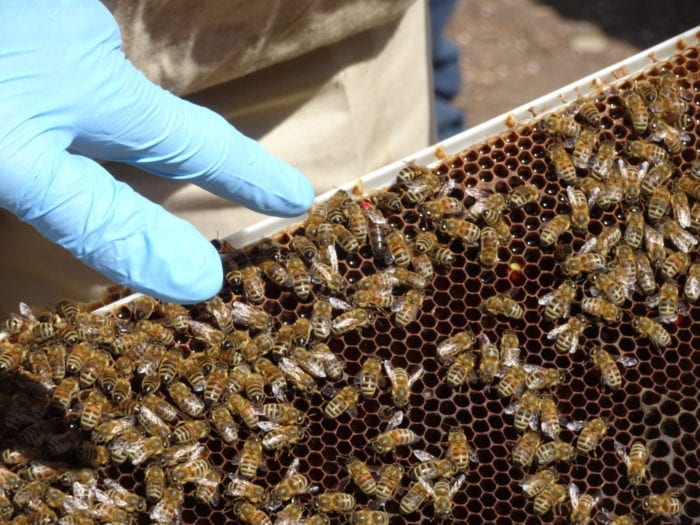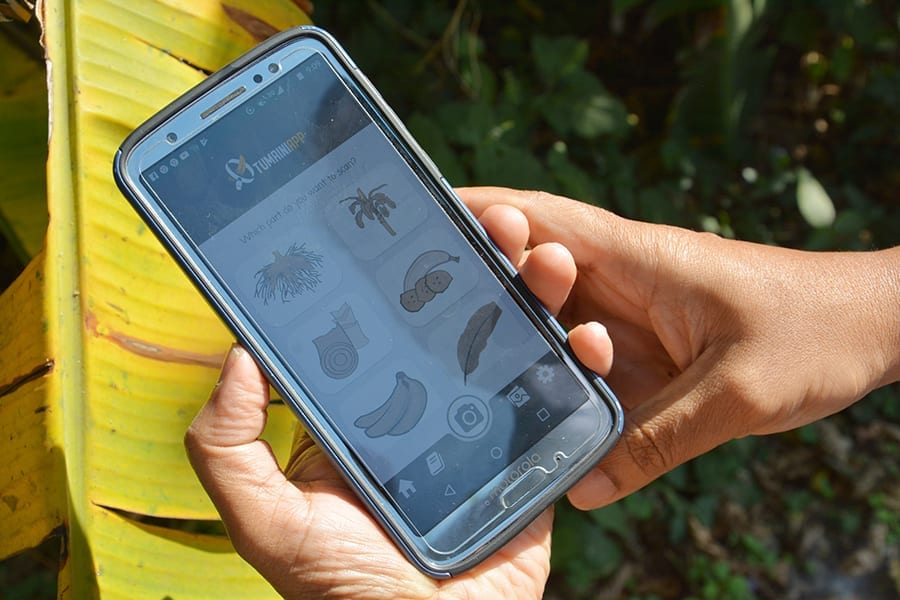
Could open the door to new bioactive healing strategies
External wounds such as skin cuts or abrasions can often be easily covered with a simple Band-Aid or a larger wound patch to protect them and facilitate their healing. When it comes to some internal surfaces like those of the gut that are coated with a mucus layer, however, such conventional wound healing materials are ineffective because the mucus hinders their firm attachment and quickly carries them away from the wound site.
Now, researchers at Harvard’s Wyss Institute for Biologically Inspired Engineering and John A. Paulson School of Engineering and Applied Sciences (SEAS) have developed a solution to this problem in the form of probiotic hydrogels made from mucoadhesive nanofibers and produced by an engineered natural gut bacterium. The hydrogels can be easily produced from bacterial cultures and applied as longer-lived self-regenerating “live gels” or shorter-lived “cell-free gels” to intestinal surfaces via syringes, spray, and endoscopic techniques to provide a seal. The study is published in Advanced Materials.
“This new type of engineered living material with its ease of production and storability, biocompatibility, and mucoadhesive properties could be a door-opener for bioactive wound healing strategies for use inside the human gut lumen,” said Neel Joshi, who is a core faculty member at the Wyss Institute and associate professor at SEAS. “We can essentially program the normal nanofiber-producing molecular machinery of nonpathogenic E. coli to produce hydrogels that have a viscosity strongly resembling that of mucus, and with mucoadhesive capabilities built into them; and their modularity could allow us to tune them to match specific sections of the gastrointestinal tract with their individual mucus compositions and structures.”
Joshi’s and other laboratories have previously harnessed commensal strains of E. coli to secrete biofilm-forming nanofibers, and as living foundries for the fabrication of pharmaceuticals, fine chemicals, or substances that can help with environmental remediation by engineering the CsgA protein that the bacteria secrete, which self-assembles into curli nanofibers in the extracellular environment. In these past applications, CsgA was modified to enable additional enzymatic or structural functions, such as the performance of a chemical reaction required for the synthesis of a drug or chemical. However, curli nanofiber-based materials thus far have not been developed for direct use as therapeutics.
“Naturally produced biofilms are known to hinder wound healing processes up to a point where they need to be actively managed by health care practitioners. We have essentially hacked one of the core machineries that produces them with the long-term goal to do exactly the opposite, to produce materials that could support wound healing in an environment that is inaccessible by other materials,” said first author Anna Duraj-Thatte, who is a Graduate School of Arts and Sciences postdoctoral fellow on Joshi’s team.
Learn more: Probiotic hydrogels heal gut wounds that other treatments can’t reach
The Latest on: Bioactive healing strategies
[google_news title=”” keyword=”bioactive healing” num_posts=”10″ blurb_length=”0″ show_thumb=”left”]
via Google News
The Latest on: Bioactive healing strategies
- BBS-Bioactive Bone Substitutes Plc: Annual General Meeting in 2024on May 7, 2024 at 12:00 pm
BBS-Bioactive Bone Substitutes Plc | Company Release | May 07, 2024 at 19:00:00 EEST ...
- Global Bioactive Coating Devices Market Poised for Robust Growth, Reaching USD 695.13 Million by 2032on May 6, 2024 at 8:55 pm
The global bioactive coating devices market is set to witness substantial growth, according to a recent market analysis. The market, valued at USD 307.45 million in 2022, is projected to surge to USD ...
- Wild Sumatran orangutan uses medicinal plant to treat facial woundon May 5, 2024 at 10:28 pm
Researchers documented the first observed case of a wild Sumatran orangutan actively treating a wound using a medicinal plant, offering insights into the origins of self-medication in non-human ...
- BBS-Bioactive Bone Substitutes – Insider information: The company updates the status of the CE marking processon May 5, 2024 at 2:30 pm
May 05, 2024 at 21:30:00 EEST. Insider information: The company updates the status of the CE marking process. Based on the a ...
- The Healing Power of Doenjang: How Korean Cuisine Helps Alleviate Menopause Symptomson May 5, 2024 at 10:14 am
Menopause is a natural phase in a woman's life, marking the end of her reproductive years. While it is a normal transition, the symptoms accompanying menopause can be challenging to manage. In recent ...
- Marine Biotechnology Market To Reach USD 13.3 Billion By 2032, Says DataHorizzon Researchon May 4, 2024 at 12:51 am
The marine biotechnology market was valued at USD 6.6 Billion in 2023 and is expected to attain CAGR of 8.06% and reach USD 13.3 Billion by 2032.Fort Collins, Colorado, May 04, 2024 (GLOBE NEWSWIRE) - ...
- Bio-inductive patch revolutionizes rotator cuff tear treatmenton April 25, 2024 at 3:05 am
Rotator cuff injuries, a common affliction among individuals of varying ages, have long posed challenges for patients seeking relief from pain and res.
- What are the health benefits of grapes?on April 22, 2024 at 4:59 pm
people have believed grapes contain healing properties. Like other fruits and vegetables, grapes are a good source of fiber and water. They contain antioxidants and other bioactive compounds that ...
- Uses and Benefits of Aloeon April 21, 2024 at 5:00 pm
Aloe vera originates from the Aloe barbadensis Miller plant, which contains over 200 bioactive compounds that ... It has shown moisturizing and wound-healing properties when applied directly ...
- Unlocking the Transformative Potential of Bioactive Glass in Healthcareon April 16, 2024 at 1:06 am
1 Compared to traditional materials like metals and plastics, bioactive glass minimizes the risk of implant rejection and actively participates in the healing process rather than remaining inert. 1 In ...
via Bing News










